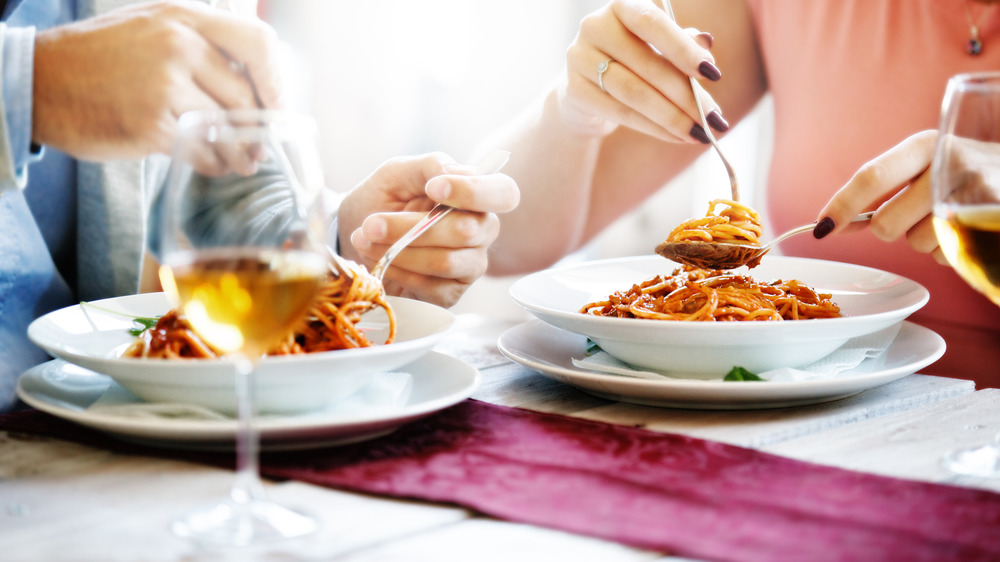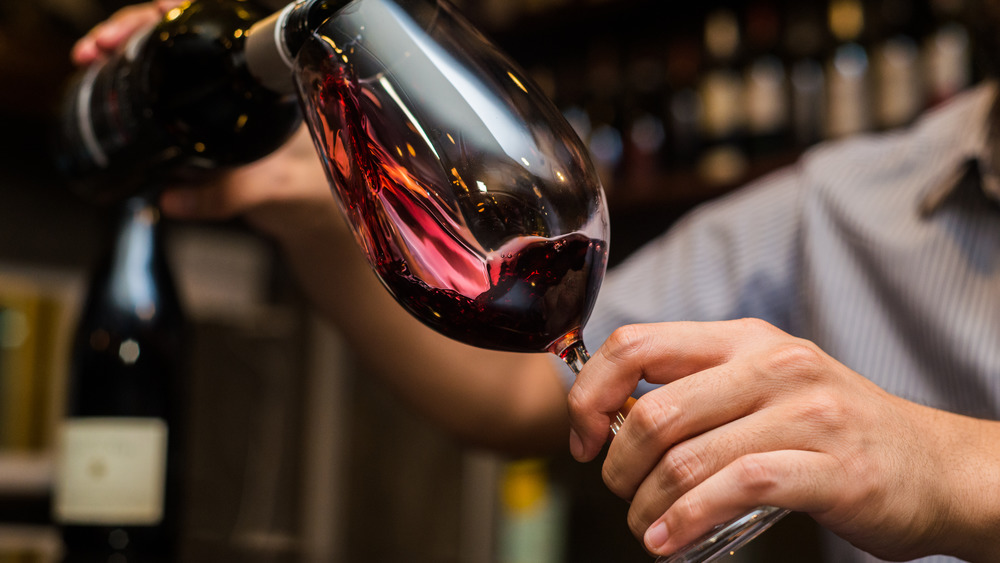Why You Should Skip The Wine At Italian Restaurants
If your pasta pomodoro is incomplete without a tall glass of vino, take note. The price you'll pay for one glass of wine is likely what the restaurant paid for the entire bottle (via Business Insider).
We're clearly willing to shell out more money for booze at a restaurant, but how much more we're paying is the shocker. For most of us, a little markup for a good wine selection is acceptable. Obviously, we can get a better deal purchasing wine at our favorite stores, especially the warehouse stores, but selecting, pairing, opening, and enjoying wine at a restaurant adds to the overall dining experience. An experience that, according to Wine Searcher, blinds us to the outrageous, greedy, and downright absurd price gouging.
Industry-wide markups average two and a half to three times the wholesale cost (via Wine Enthusiast). That means, wine priced at $10 per bottle wholesale might sell for $15 at the grocery store, and $25 to $30 in a restaurant. And establishments vary widely too — the same wine may be $15 at one restaurant, $25 at another, and $40 at a third.
Wine markups aren't a secret; it's the industry standard
Sommelier Business encourages restaurant owners to mark up wine 200 to 300 percent over the retail sales price. That means, if the wine sells for $20 at the store, the restaurant should price it at $60 to $80. Rare and specialty wines can be marked up as high as 400 percent.
When it comes to wine by the glass, the industry standard is to price a single glass of wine at the wholesale cost of the bottle. In other words, if the restaurant purchased a case of wine at $10 per bottle, it's $10 per glass for you (via Sommelier Business).
Where the wine falls in the menu's lineup matters too. Most wine lists follow a graduated markup, and you'll find the highest markups on the cheapest wines. A $10 wholesale wine may be marked up to $30, but a $50 specialty wine might be just $80 (via Wine Enthusiast). Oftentimes, the more you spend, the more value (and better wine) you're getting for the money.
But that doesn't mean you should fork over the cash. According to WineCoolerDirect.com, you probably won't be able to tell the difference between a $40 bottle and a $200 bottle of wine, so save your money and splurge at home.
If you want to know exactly how much the upcharge is, peruse the Wine-Searcher app to see if you're getting a good deal. And remember, you'll always pay more when dining-out; the key is to determine what's fair and what's not.

